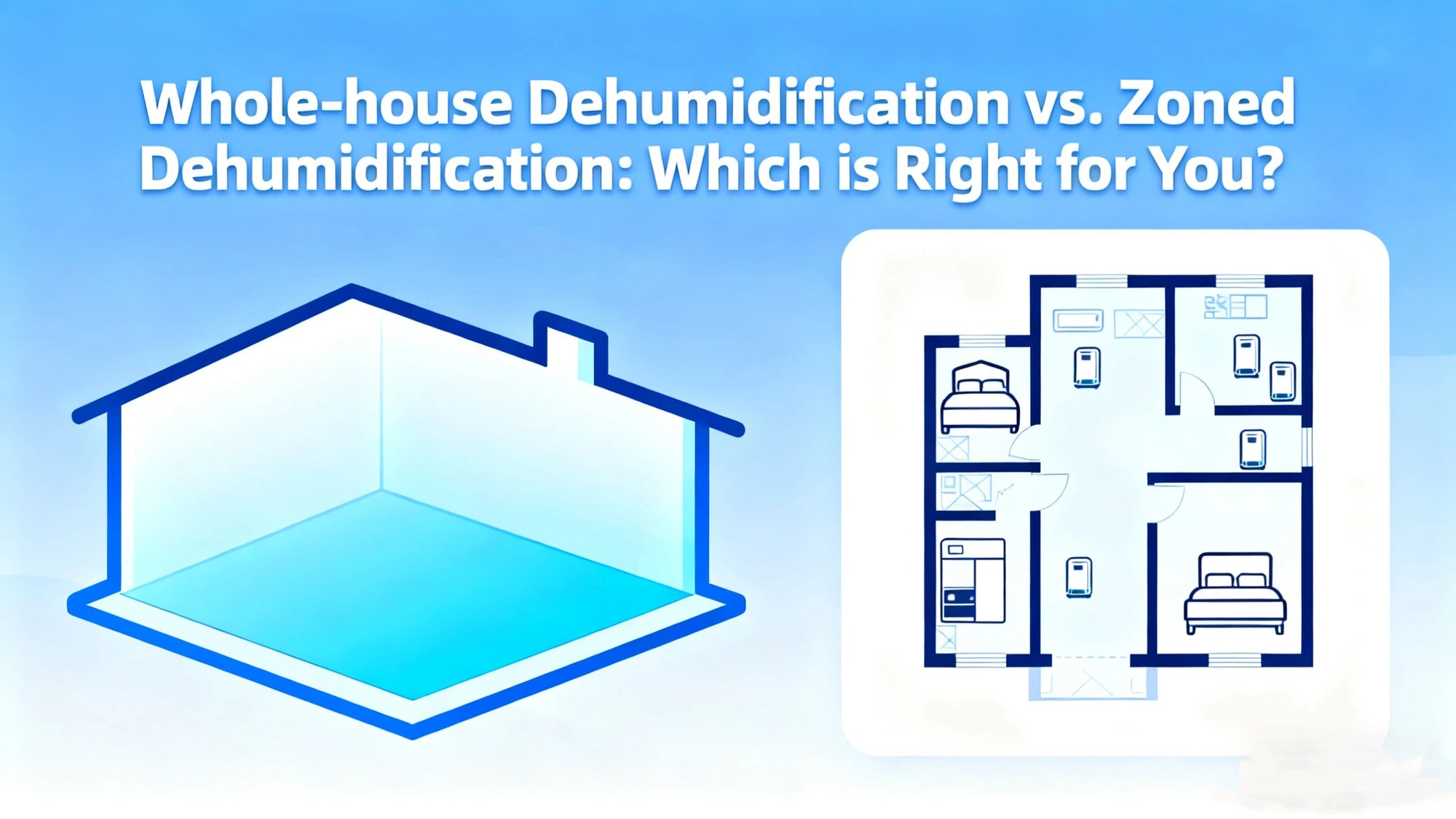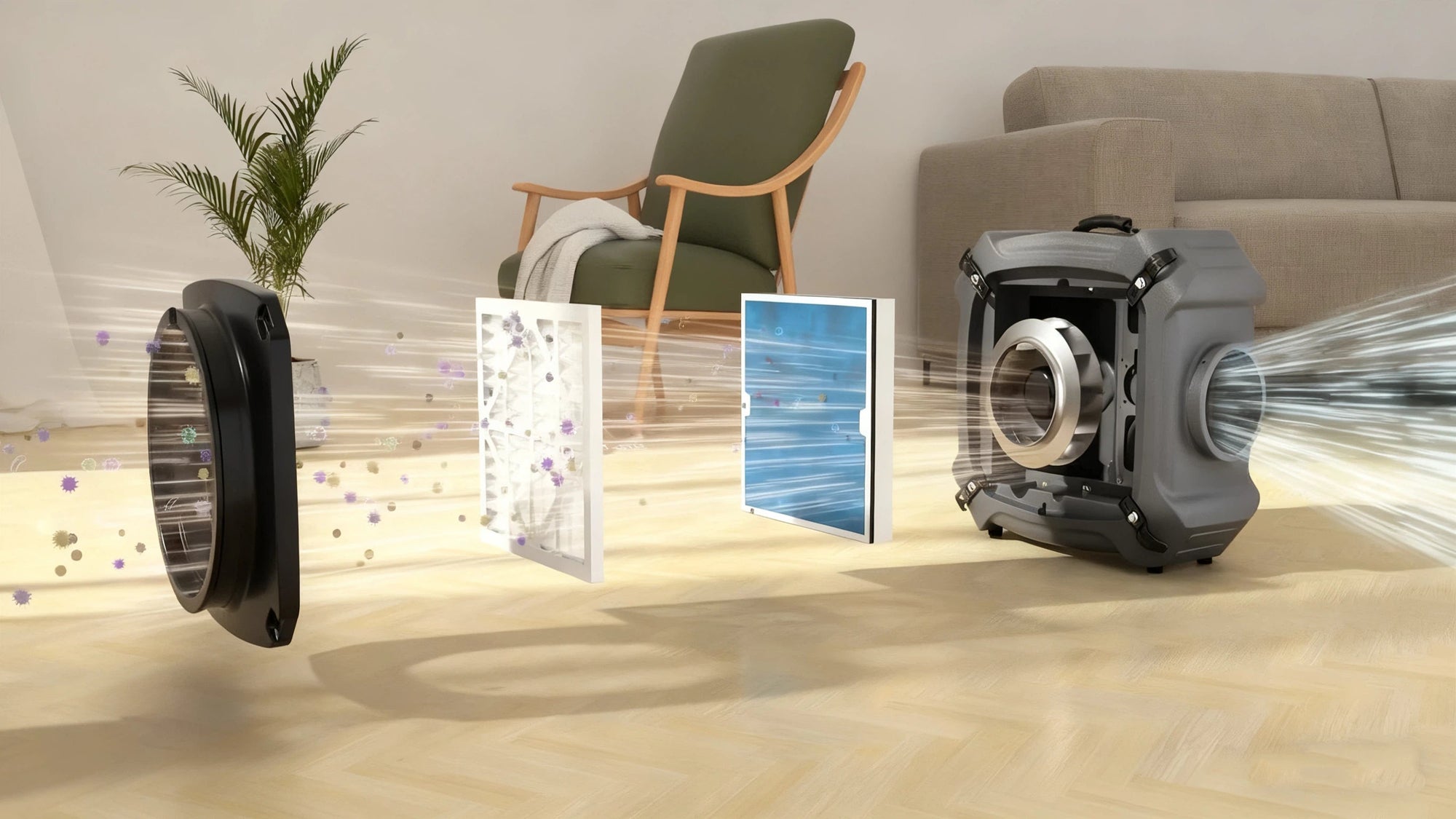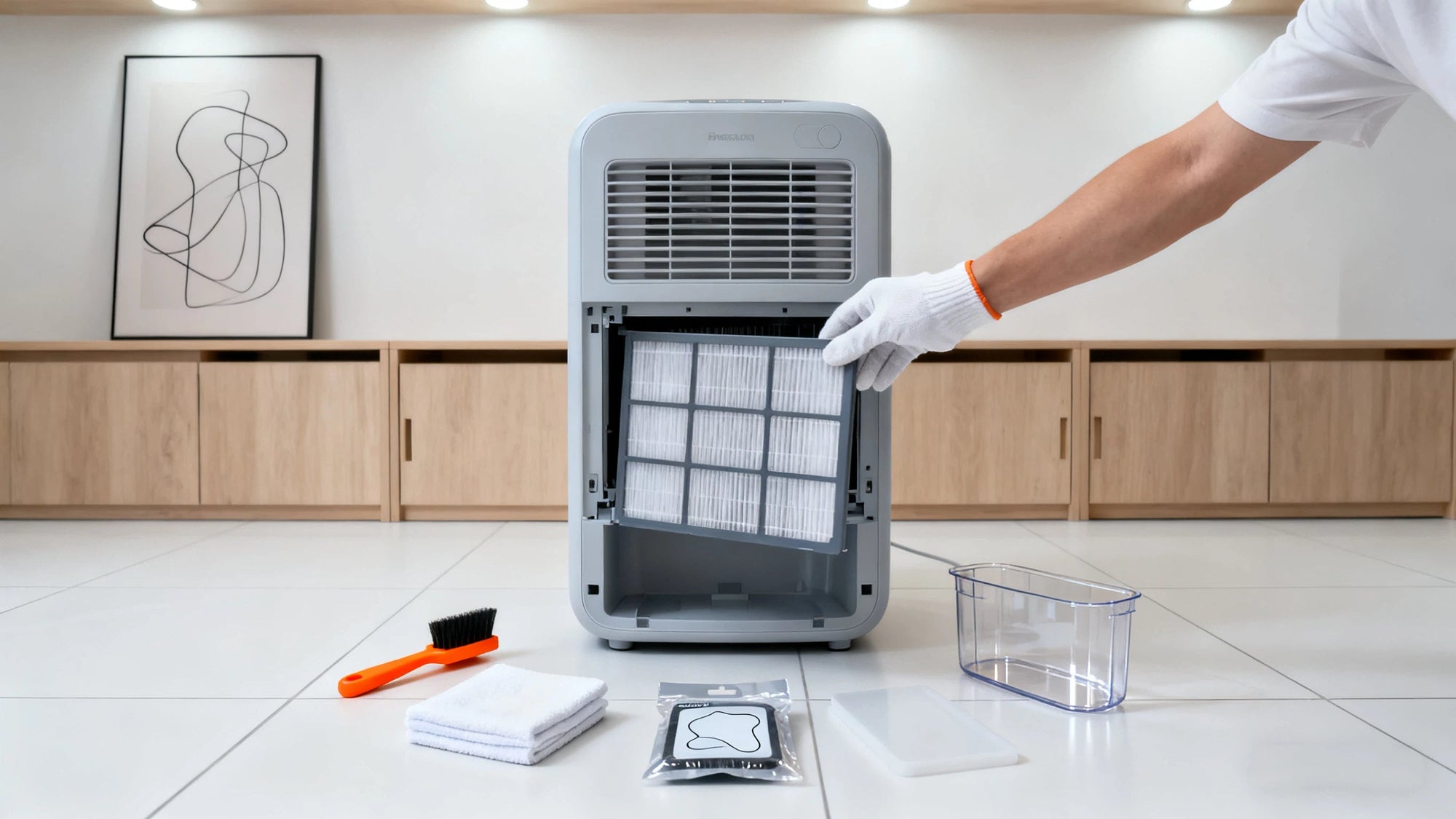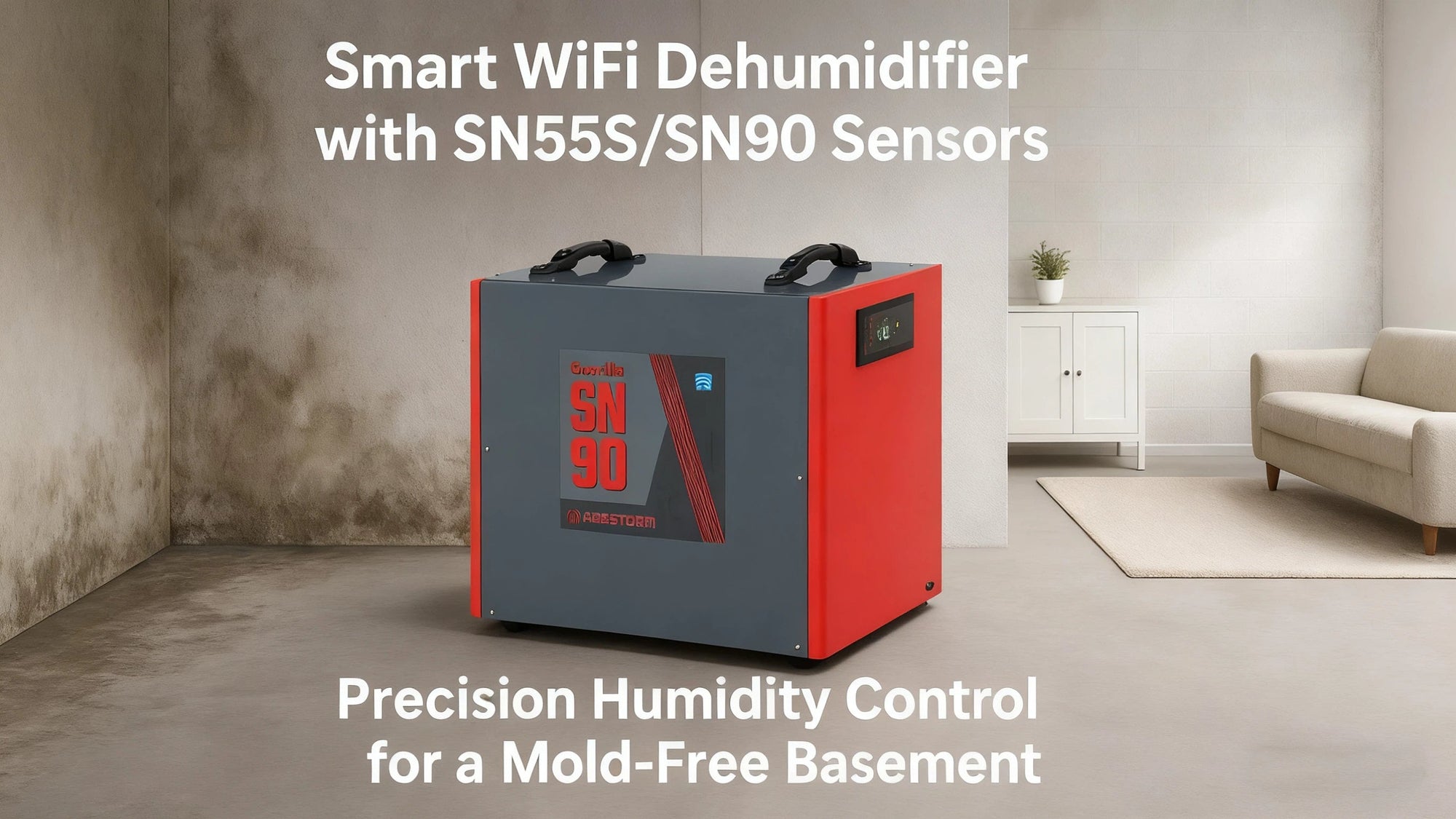Confused between a blower and a fan? No worries! Both move air, but the major difference lies in pressure and purpose. Fans are great for moving large volumes of air at home, and blowers can push air through ducts to target focal areas with higher pressure.
However, there is much more than this, and understanding how each works, their applications, and which one suits your needs can save you money, energy, and frustration. So, here you go!
The Difference Between Fans and Blowers
People usually ask, 'Are fans and blowers the same?' No! A fan has rotating blades, such as axial, cross-flow, or centrifugal, that move large volumes of air at low pressure.
Fans are ideal for general air circulation, climate control, and comfort use at home. They can be ceiling fans, crawl space vents, computer case fans, or air-cooled radiators.
A blower can move air with higher pressure and force than a fan. It uses an impeller to push air through a narrow space. This is perfect for tasks like drying, ventilation through ducts, or removing dust and debris.
One misconception is that people usually use the term blower fan, thinking it refers to a special type of device that combines features of both a blower and a fan. In reality, blowers and fans are two separate devices with different designs, functions, and purposes.
Pressure Ratio
The American Society of Mechanical Engineers (ASME) presents the difference between a fan and a blower by pressure generation capability:
● Fans: Pressure ratio ≤ 1.11 (minimal compression, high-volume flow) 1512
● Blowers: Pressure ratio 1.11–1.2 (moderate compression, directed airflow)
● Compressors: Pressure ratio >1.2 (high compression for pneumatic systems)
Design and Construction Differences
Comparing their structural components, a fan has blades, whether axial or radial, to push or accelerate air and often use lightweight aluminum or plastic. Plus, they are cost-effective for low-stress uses.
However, blowers have forward-curved impellers inside a casing for efficiency in HVAC and backward-inclined impellers for high-static industrial uses. These are made of cast iron or stainless steel to withstand pressure, heat, and corrosive gases.

Technical Performance Comparison
Airflow and Pressure Characteristics
|
Parameter |
Fans |
Blowers |
|
Airflow Volume |
High volume, low velocity |
Moderate volume, high velocity |
|
Pressure Output |
Low (< 0.5 psi) |
Medium (0.5–2 psi) |
|
Directionality |
Omnidirectional, diffuse |
Focused, linear airstream |
|
Noise Level |
Lower (25–50 dB) |
Higher (60–85 dB) |
Mechanical Design & Airflow Generation
Fans use blades (axial or radial) that rotate to create low-pressure, broad airflow, like ceiling fans sweep air downward in a wide column.
However, blowers employ enclosed impellers (centrifugal or positive displacement) that accelerate air radially. For example, centrifugal blowers in furnaces force air through ducts via centrifugal force.
Applications: When to Use Which
If you are confused, how do I choose a fan or blower? The answer is simple: fans are ideal for low pressure and broad coverage. You can use the following types of fan:
● For home/office cooling, ceiling fans, pedestal fans, and HVAC vents keep indoor spaces comfortable.
● Electronics cooling, axial fans inside computers and servers, help prevent overheating by moving heat away from components.
● For ventilation, crawlspace ventilator fans, attic fans, and window fans efficiently circulate air and remove moisture or stale air.
You can use a blower for high-pressure tasks such as:
● In industrial drying, blowers help quickly remove moisture from cars in washes, etc.
● In material handling, they move powders or grains through pipes using air pressure.
● Combustion systems depend on blowers to provide oxygen into boilers or incinerators to keep flames burning efficiently.

Cost, Efficiency, and Maintenance Trade-Offs
Purchase and Operating Costs
|
Factor |
Fans |
Blowers |
|
Initial Cost |
$20–$500 (lower complexity) |
$200–$5,000 (heavy-duty build) |
|
Energy Use |
50–500W |
300–5,000W |
|
Lifespan |
3–7 years |
5–15 years |
|
Maintenance |
Minimal (blade cleaning) |
Bearings/impeller inspections |
What to Avoid:
● Never use fans for a ducted system because static pressure in ducts reduces fan airflow by up to 60%, but blowers handle resistance better.
● Oversized blowers provide excess pressure that wastes energy and causes noise, so calculate CFM requirements to understand what size ventilation fan you need.
Energy Efficiency and Noise
Fans are quiet in operation, especially axial models, and are more energy efficient because they consume less power for moving air due to low pressure. They are also ideal for continuous use in homes or offices.
Blowers need more energy to generate higher-pressure airflow; thus, they are noisy and take more power. So, if you want quiet and energy-saving performance, a fan is a better choice.
5 Tips to Choose Between a Fan and a Blower
These tips can help you make the right choice:
Pressure Needs
If you are moving air through ducts, filters, or tight spaces, choose a blower! It can deliver high pressure. For open areas like rooms or hallways, a fan works best.
Airflow Volume (CFM)
Need to move a lot of air gently? Go for an axial fan and if you need high-pressure airflow in compact volumes, a centrifugal blower works best.
Environment
When dealing with hazardous fumes or flammable gases, use an explosion-proof blower. For bedrooms or in a commercial environment, a quiet DC fan under 35 dB is ideal.
Energy Constraints
If you are off-grid or want to cut energy costs, low-wattage DC fans or solar-powered options offer efficient airflow without draining power.
Durability Demands
In an industrial environment that is usually hot, stainless steel blowers resist corrosion and heat. They are perfect for long-term durability.
Final Words
Fans and blowers both have spinning blades, but they differ in function, design, and application. So, it is important to understand the differences so that you can make a wise decision.
After all, aligning your needs with the right technology can ensure efficiency, longevity, and peak performance. I hope this article helps you a lot!









Shop For Dehumidifier
Abestorm 170 PPD 2,100 Sq.Ft Commercial Dehumidifier with Pump and Drain Hose | Hurricane 800
Abestorm 180 PPD 2,300 Sq.Ft Commercial Dehumidifier with Pump and Drain Hose | Hurricane LGR85
Abestorm 180 PPD 2,300 Sq.Ft Smart WIFI Commercial Dehumidifier with Pump and Drain Hose | Hurricane LGR85-Grey (wifi app not available now)
Abestorm 264 PPD 3,000 Sq.Ft Commercial Dehumidifier with Pump and Drain Hose | Hurricane 125P